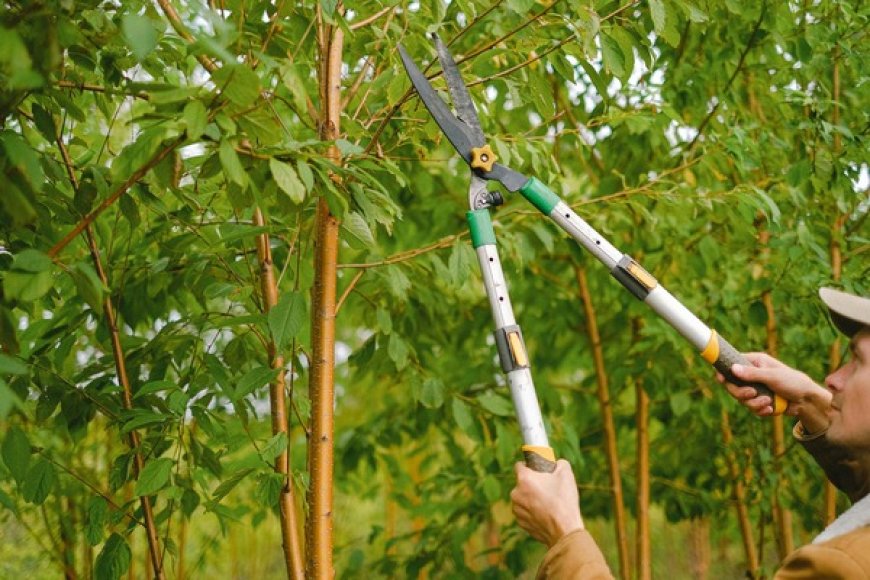Tree Removal: Essential Information for Homeowners
Learn about the importance of tree removal, when to consider it, and how it complements tree- trimming. Keep your yard beautiful with the Diamond Tree Company.

Maintaining a safe and attractive yard is a priority for homeowners, and sometimes that means having to remove a tree. Tree removal is a significant task that requires careful consideration and expertise. In this blog, we'll explore the ins and outs of removing trees, its importance, and how it complements tree-trimming efforts.
The Importance of Tree Removal
Safety Concerns
Trees can become hazards if they are dead, diseased, or structurally compromised. Such trees pose risks to your property and personal safety. Removing a dangerous tree can prevent accidents and damage during storms or high winds.
Property Value
The curb appeal and value of your property are enhanced by a well-kept yard. Conversely, unsightly or overgrown trees can detract from the beauty of your landscape. Strategic tree removal enhances the aesthetic appeal of your property, making it more attractive to potential buyers.
Health of Other Trees
Sometimes, tree cutting is necessary to promote the health of other trees in your yard. Overcrowded trees compete for sunlight, water, and nutrients, which can hinder their growth and vitality. Removing one or more trees can improve the overall health of your landscape.
When to Consider Removal of Trees
Visible Damage
If a tree has visible damage, such as large cracks, broken branches, or significant decay, it may be time for removal. These issues often indicate that the tree is no longer structurally sound and could fall unexpectedly.
Disease
Diseased trees can spread infections to other plants and trees in your yard. Signs of disease include discolored leaves, unusual growth patterns, and fungal growth. Consulting with a professional arborist can help determine if removal is necessary.
Root Problems
Tree roots can cause significant damage to your property, including your home's foundation, driveways, and underground utilities. If roots are causing structural damage, removing the tree might be the best solution.
Tree Cutting Process
Assessment
Before removal, a professional arborist will assess the tree's condition, location, and potential hazards. This assessment helps in planning the safest and most efficient removal process.
Permits
Depending on your location, you may need a permit to remove a tree. To confirm compliance with regulations, check with your homeowners' association or local government.
Removal Techniques
Professional tree removal involves several techniques, including:
-
Felling: cutting the tree down in one piece, usually when there's ample space for it to fall safely.
-
Sectional dismantling: removing the tree in sections, starting from the top, which is ideal for trees near structures or in confined spaces.
-
Crane Removal: Using a crane to lift and remove large or hazardous trees minimizes risk and damage to the surrounding area.
Clean-Up
After the tree is removed, the area is cleared of debris. This may include chipping branches, cutting the trunk into manageable pieces, and removing the stump if requested.
Tree Trimming: A Complementary Practice
While cutting down trees is sometimes necessary, regular tree trimming can prevent many issues that lead to removal. The trimming of trees involves selectively removing branches to improve a tree's health, appearance, and safety.
Benefits of Tree-Trimming
-
Improves Tree Health: Removing dead or diseased branches promotes healthy growth.
-
Enhances Appearance: Well-trimmed trees look more attractive and can enhance your landscape's overall aesthetic.
-
Increases Safety: Trimming reduces the risk of falling branches, which can cause injury or damage during storms.
-
Boosts Fruit Production: For fruit trees, regular trimming can increase yield and quality.
When to Trim Trees
The best time to trim trees depends on the species and the desired outcome. Generally, late winter or early spring is ideal before new growth begins. However, removing dead or hazardous branches can be done at any time of year.
Hiring a Professional
Tree removal and trimming are complex tasks that require expertise and the proper equipment. Hiring a professional ensures the job is done safely and correctly.
Choosing the Right Arborist
When selecting an arborist, consider the following:
-
Certification: Look for ISA (International Society of Arboriculture) certification, which indicates a high level of expertise.
-
Insurance: Ensure the company has liability and workers' compensation insurance to protect against accidents.
-
References: Ask for references and read reviews to gauge the company's reputation.
-
Estimate: Obtain a written estimate that outlines the cost and scope of the work.
Conclusion
The removal of trees is sometimes necessary to maintain a safe and beautiful yard. By understanding the process and benefits, homeowners can make informed decisions about their landscape. Additionally, regular tree trimming can prevent many issues and enhance the health and appearance of your trees.
For professional tree removal and trimming services, trust The Diamond Tree Company. Contact us today to ensure your yard remains safe and beautiful.

 makha
makha 










